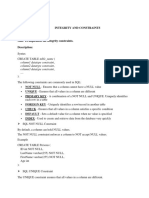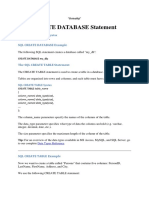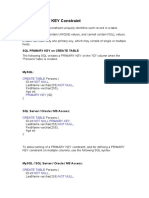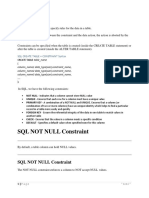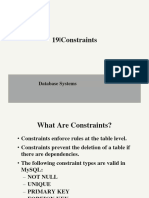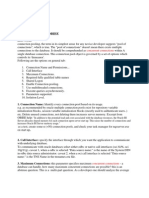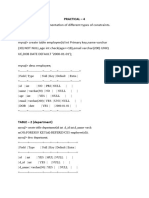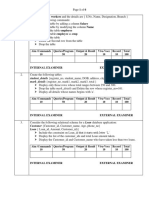0% found this document useful (0 votes)
5 views10 pagesConstraints DBMS
The document provides an overview of SQL constraints including NOT NULL, UNIQUE, CHECK, DEFAULT, PRIMARY KEY, and FOREIGN KEY. It explains how to implement these constraints using SQL commands during table creation and alteration. Each constraint serves to enforce data integrity and define relationships between tables in a database.
Uploaded by
hawkplays2707Copyright
© © All Rights Reserved
We take content rights seriously. If you suspect this is your content, claim it here.
Available Formats
Download as DOCX, PDF, TXT or read online on Scribd
0% found this document useful (0 votes)
5 views10 pagesConstraints DBMS
The document provides an overview of SQL constraints including NOT NULL, UNIQUE, CHECK, DEFAULT, PRIMARY KEY, and FOREIGN KEY. It explains how to implement these constraints using SQL commands during table creation and alteration. Each constraint serves to enforce data integrity and define relationships between tables in a database.
Uploaded by
hawkplays2707Copyright
© © All Rights Reserved
We take content rights seriously. If you suspect this is your content, claim it here.
Available Formats
Download as DOCX, PDF, TXT or read online on Scribd
/ 10















